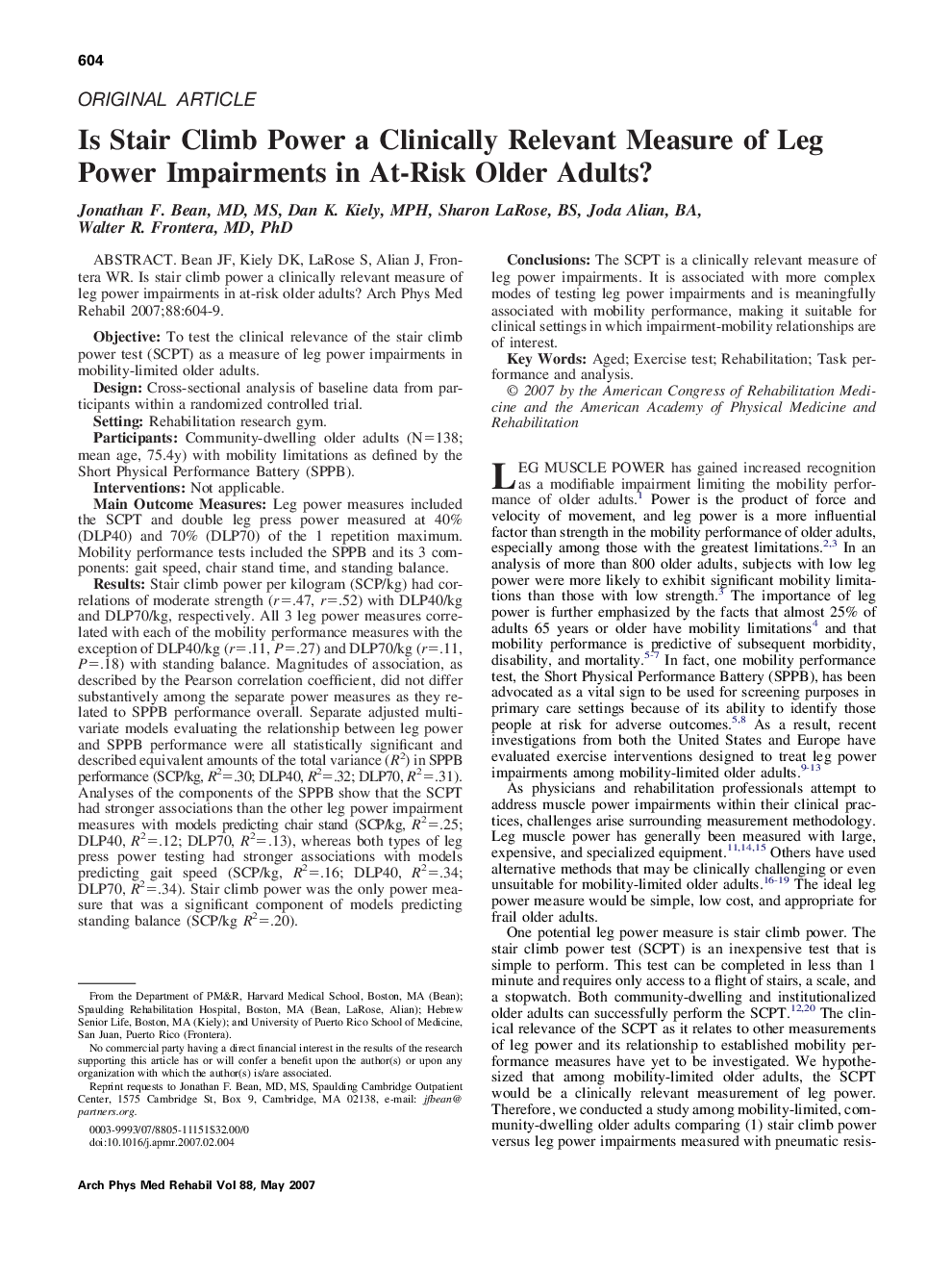| Article ID | Journal | Published Year | Pages | File Type |
|---|---|---|---|---|
| 3452914 | Archives of Physical Medicine and Rehabilitation | 2007 | 6 Pages |
Bean JF, Kiely DK, LaRose S, Alian J, Frontera WR. Is stair climb power a clinically relevant measure of leg power impairments in at-risk older adults?ObjectiveTo test the clinical relevance of the stair climb power test (SCPT) as a measure of leg power impairments in mobility-limited older adults.DesignCross-sectional analysis of baseline data from participants within a randomized controlled trial.SettingRehabilitation research gym.ParticipantsCommunity-dwelling older adults (N=138; mean age, 75.4y) with mobility limitations as defined by the Short Physical Performance Battery (SPPB).InterventionsNot applicable.Main Outcome MeasuresLeg power measures included the SCPT and double leg press power measured at 40% (DLP40) and 70% (DLP70) of the 1 repetition maximum. Mobility performance tests included the SPPB and its 3 components: gait speed, chair stand time, and standing balance.ResultsStair climb power per kilogram (SCP/kg) had correlations of moderate strength (r=.47, r=.52) with DLP40/kg and DLP70/kg, respectively. All 3 leg power measures correlated with each of the mobility performance measures with the exception of DLP40/kg (r=.11, P=.27) and DLP70/kg (r=.11, P=.18) with standing balance. Magnitudes of association, as described by the Pearson correlation coefficient, did not differ substantively among the separate power measures as they related to SPPB performance overall. Separate adjusted multivariate models evaluating the relationship between leg power and SPPB performance were all statistically significant and described equivalent amounts of the total variance (R2) in SPPB performance (SCP/kg, R2=.30; DLP40, R2=.32; DLP70, R2=.31). Analyses of the components of the SPPB show that the SCPT had stronger associations than the other leg power impairment measures with models predicting chair stand (SCP/kg, R2=.25; DLP40, R2=.12; DLP70, R2=.13), whereas both types of leg press power testing had stronger associations with models predicting gait speed (SCP/kg, R2=.16; DLP40, R2=.34; DLP70, R2=.34). Stair climb power was the only power measure that was a significant component of models predicting standing balance (SCP/kg R2=.20).ConclusionsThe SCPT is a clinically relevant measure of leg power impairments. It is associated with more complex modes of testing leg power impairments and is meaningfully associated with mobility performance, making it suitable for clinical settings in which impairment-mobility relationships are of interest.
